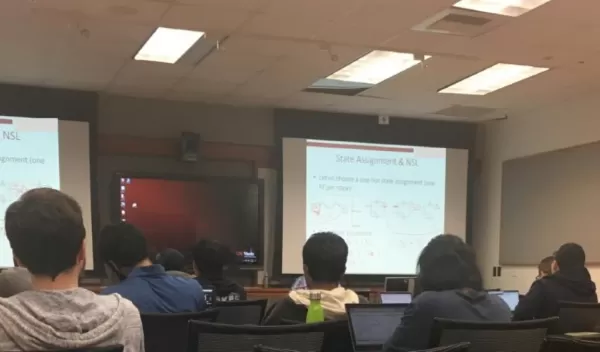
For university classrooms, are telepresence robots the next best thing to being there?
Telepresence robots help university students learning remotely to feel more a part of the class, new research by Oregon State University suggests.
The findings are particularly important given the nationwide shift to online instruction caused by the COVID-19 pandemic, forcing many students who otherwise would be in classrooms and labs to pursue their education from a distance.
A study supported by the National Science Foundation and led by Naomi Fitter of the OSU College of Engineering examined the experiences of university students attending classes in three formats: in person; through a telepresence robot; and through distance learning tools such as livestreaming, recorded lectures and calling into class with questions.
Findings were published in IEEE Robotics and Automation Letters.
The preferences of the 18 engineering students who were studied were split between using distance learning tools and attending in person. Instructors of the four courses in the study uniformly preferred teaching students in person.
But the instructors felt telepresence robots were preferable to distance learning tools for remote learning, and the students noted the robots' ability to keep them more engaged, expressive and self-aware.
Even before the pandemic, Fitter notes, 14% of university students in the United States were pursuing degrees exclusively online, and another 15% were using distance learning technologies at least some of the time.
"Students engage in distance learning for many reasons," she said. "There are fundamental challenges in distance learning, such as the need to find a way to train students in the time management and active listening skills typically developed during higher education."
"Distance learners are also susceptible to missing out on benefiting from their peers -- effective social interaction while learning leads to better critical thinking and longer-term information retention."
Added Prabhakaran Balakrishnan, a program director in NSF's Division of Information and Intelligent Systems, "Research experience for undergraduates has become a big challenge during the ongoing pandemic, and telepresence robots can help not only in education but also in possibilities for undergraduates to hone their research skills through remote participation."


